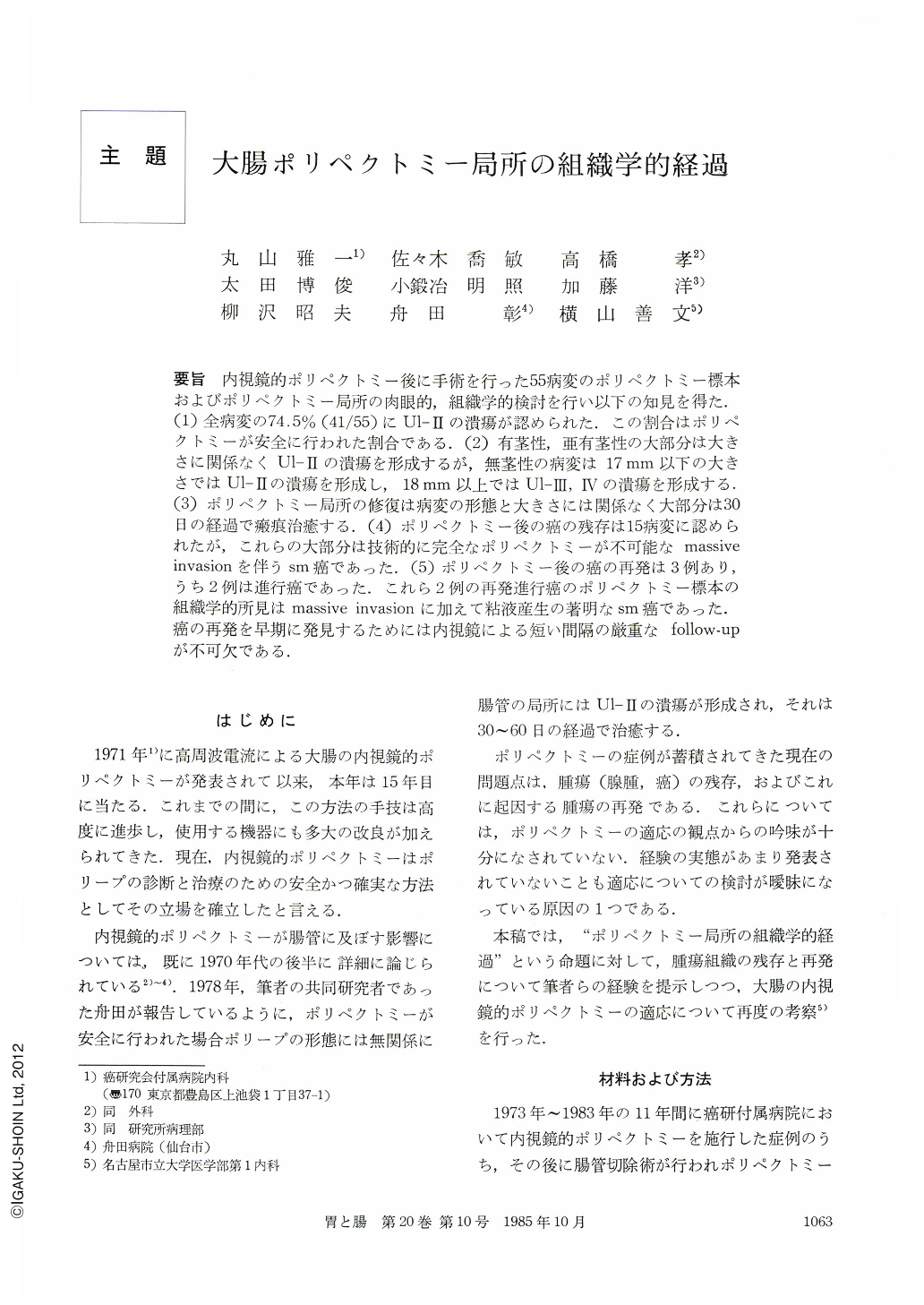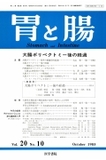Japanese
English
- 有料閲覧
- Abstract 文献概要
- 1ページ目 Look Inside
要旨 内視鏡的ポリペクトミー後に手術を行った55病変のポリペクトミー標本およびポリペクトミー局所の肉眼的,組織学的検討を行い以下の知見を得た.(1)全病変の74.5%(41/55)にUl-Ⅱの潰瘍が認められた。この割合はポリペクトミーが安全に行われた割合である.(2)有茎性,亜有茎性の大部分は大きさに関係なくUl-Ⅱの潰瘍を形成するが,無茎性の病変は17mm以下の大きさではUl-Ⅱの潰瘍を形成し,18mm以上ではUl-Ⅲ,Ⅳの潰瘍を形成する.(3)ポリペクトミー局所の修復は病変の形態と大きさには関係なく大部分は30日の経過で瘢痕治癒する.(4)ポリペクトミー後の癌の残存は15病変に認められたが,これらの大部分は技術的に完全なポリペクトミーが不可能なmassive invasionを伴うsm癌であった.(5)ポリペクトミー後の癌の再発は3例あり,うち2例は進行癌であった.これら2例の再発進行癌のポリペクトミー標本の組織学的所見はmassive invasionに加えて粘液産生の著明なsm癌であった.癌の再発を早期に発見するためには内視鏡による短い間隔の厳重なfollow-upが不可欠である.
Macroscopic and histologic change occurring at polypectomy site was studied, based on 55 operated materials which had been obtained in a period 11 years from 1973 to 1983 at the Cancer Institute Hospital, and the following results were obtained.
1) Ulcer extending only to the submucosal layer (Ul-Ⅱ) was observed in 74.5% (41/55), which corresponded to the number of cases in which endoscopic polypectomy was safely performed. 2) Polypectomy of pedunculated and subpedunculated lesion caused Ul-Ⅱ grade of ulcer in most cases irrespective of its size, while polypectomy of sessile lesion caused various depth of ulcer, depending on its size. Ul-Ⅱ grade of ulcer was observed in the sessile lesion measuring less than 17 mm in the greatest diameter, and ulcer involving the propria muscle (Ul-Ⅲ) and penetrating through it (Ul‐Ⅳ) was observed in the lesions measuring larger than 18mm. 3) Ulcer of the polypectomy site was repaired 30 days after polypectomy in most cases, regardless of size and form of lesion, and depth of ulcer. 4) There were 15 lesions with remaining cancer at the polypectomy site. Thirteen cases of them were invasive cancer with massive submucosal invasion which could not be removed completely by polypectomy. 5) There were three recurrent cancers. One of them had remained in the mucosal membrane, but the other two had developed into advanced cancer. The polypectomized specimen of these advanced cancers was diagnosed as invasive cancer with marked mucus production in addition to massive submucosal invasion.
Strict follow-up with short intervals is required in order to detect loeal recurrent cancers in early operatrve stage.

Copyright © 1985, Igaku-Shoin Ltd. All rights reserved.


